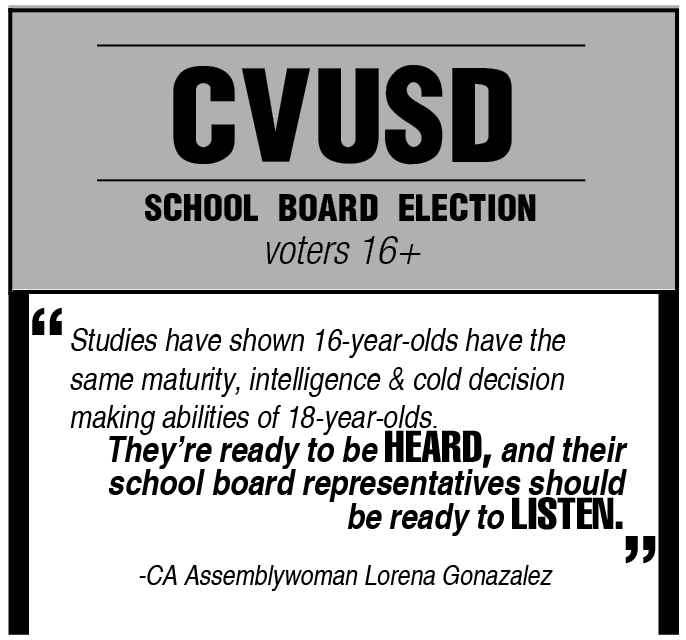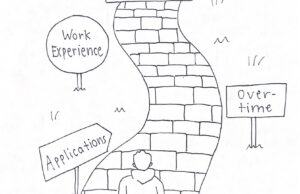California Assembly Constitutional Amendment: a step towards hearing student voices
 The decisions of school boards affect every student on every campus in every district of this state – from the appointment of administrators at their schools to the educational policies in their classrooms. Despite this fact, students do not have the right to vote for the representatives of these school boards.
The decisions of school boards affect every student on every campus in every district of this state – from the appointment of administrators at their schools to the educational policies in their classrooms. Despite this fact, students do not have the right to vote for the representatives of these school boards.
However, they want to be involved: In early 2015, Berkeley High School students protested against the school board’s failed response to their claims of sexual harassment. Across the nation, six other state and local legislatures are recognizing this involvement, producing bills and amendments that would allow for modes of student input in board of education elections.
California Assemblywoman Lorena Gonzalez has also responded to this movement. She proposed her Assembly Constitutional Amendment 7 first on Feb. 12, which aims to amend Section 2 Article II of California’s constitution to allow 16- and 17-year-olds the right to vote on local school board and community college district board elections.
This proposal is welcome, but long overdue. At the moment in California, only adults may vote for school board members, even those who don’t have children or whose children have already moved on past the high school level. Elections are supposed to be opportunities for the represented to choose their representers, but students, who have firsthand knowledge of the school system, its effects on their peers, and the success rates of board policies, aren’t given the option to cast their votes.
While the school board should respect the choices of local parents, education is an issue that should involve the students. After all, they are the principal recipients of any action produced by board decisions and care about the education forming the foundation of their futures. Additionally, they’re taking on more “adult” responsibilities: According to the US Bureau of Labor Statistics, at ages 16 and 17, around 20 percent of enrolled students have already begun to work and file taxes. As deserving compensation for these meaningful contributions to the economy and society, students deserve the right to vote for school boards.
Lowering the voting age for school board elections would also encourage students to participate in civil service later on. According to the Center for Information and Research on Civic Learning and Engagement, only 19.9 percent of voters between 18 and 29 actually voted in a 2014 federal election, marking one of the lowest voter turnouts in such an election ever. Voting for school board members would inspire students to vote on a larger scale for higher government offices and help raise this percentage. They’ll be able to practice the democratic experience and see their input actually matter in events that directly impact their lives, while not having the pressure of voting for a more influential position.
With our current system, students are forced to protest to see change in their school systems by signing petitions or walking out of classes. Just this week, students from TechBoston Academy walked out of class in the middle of the day to protest district budget cuts, while other students protested in Parker, Colorado against a high teacher turnover rate instituted by the school board. Situations like these are clear in their message: students are invested their learning. Given the ability to vote for their preferred representative on the board, students can have even more influence over their own education without needing to resort to these routes. The representatives will be held accountable to student interests and perspectives. Much like how presidential candidates work to satisfy their campaign donors and supporting demographic, board members will need to balance the interests of both the students and the parents when making decisions.
Changes to education will arise more efficiently and effectively as student opinions are streamlined into a practical legal action. At an age when ideas are fresh and information is easily accessible, these elder high school students deserve to help pave their paths to success.
Graphic by Kellie Levine/Prowler



